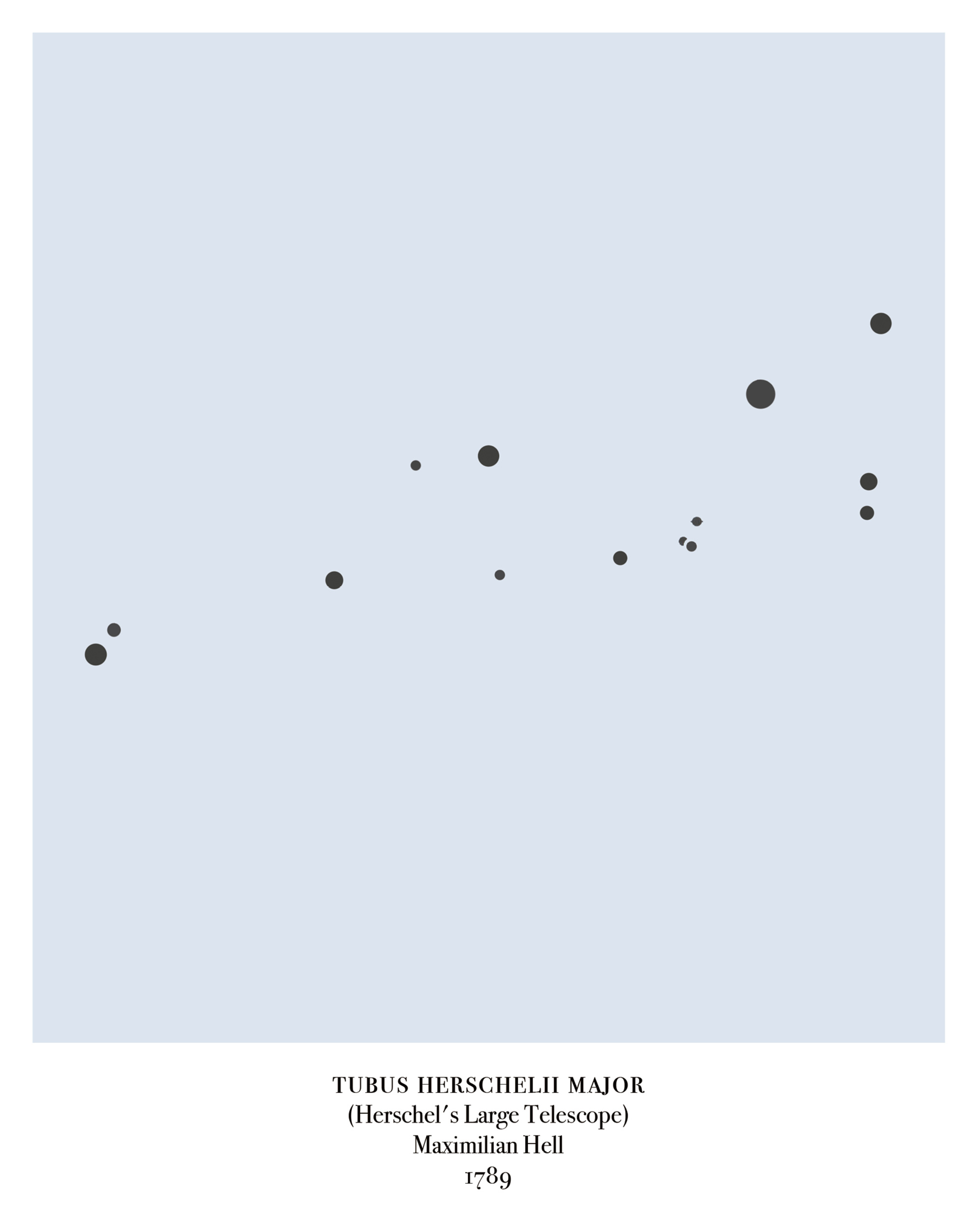Artist Project / Burnouts
Tracking obsolete asterisms
Julia Christensen
A constellation is a sector of the night sky, much like a zip code, used by astronomers and stargazers to indicate the location of any particular celestial body. Within these constellations are asterisms, the technical name for the familiar representational images, such as Hercules or Virgo, that have long served as identifying landmarks in the night sky. (Since the early twentieth century, scientists have been careful to distinguish between the two words, but “constellation” continues to be the lay term used to designate an asterism.) In 1930, after a lengthy process, the International Astronomical Union (IAU) defined the official boundaries of constellations, in the process splitting certain ancient asterisms across multiple constellations. But often a given asterism lies within a single constellation bearing its name—when a stargazer finds the asterism Orion, for instance, then they are viewing the region of the sky known as Orion.

There are currently eighty-eight IAU-recognized constellations on the star map, and many of the individual asterisms around which they were drawn have survived for over two thousand years, across many incarnations of the mapped night sky. During that time, however, scores of asterisms were proposed, charted, and eventually left behind for one reason or another. The 1800s experienced a veritable “constellation mania,” as scientists “discovered” one star figure after another and named them in honor of supporters and patrons, often motivated by political or financial ambitions. For instance, in 1679, Augustin Royer introduced an asterism that formed the image of a scepter and hand to flatter Louis XIV, while in 1684, Gottfried Kirch introduced Gladii Electorales Saxonici, picturing the crossed swords of the Electors of Saxony, to honor Emperor Leopold I of Germany. This centuries-long free-for-all came to an end in 1922, when the newly established IAU selected eighty-eight asterisms to form the basis of the map still in use today. Meanwhile, hanging around in the night sky, are more than one hundred “retired” asterisms, star patterns that did not make the cut.
Why have these become less relevant to us here on Earth, so irrelevant that they’ve been left off of maps entirely? One reason is mentioned above: when scientists named star groups to commemorate their donors or for political reasons, the figures they described were perhaps less about the stars than about the star-mapper. In time, the enormous discrepancy between such minor histories and the grandeur of the stars by which they were represented became increasingly apparent. But another reason for decommissioned constellations is actually change that has occurred on our own planet. Simply put, planet Earth is a much brighter place today than it was in centuries past. At the turn of the last century, ambient light in our cities had already increased to the extent that it impacted our view of the celestial bodies around us. Streetlights were introduced in the United States in the late 1870s, and by the 1890s New York City’s Broadway had already gained its nickname “The Great White Way.” Since then, darkness has become increasingly scarce on our planet, and stars in the night sky appear dimmer than they used to. There are asterisms that could once have been very useful to the study of the stars but can simply no longer be seen from our earthly viewpoint. As such, they have been left off contemporary maps.